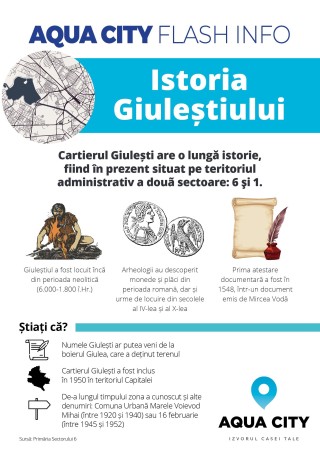Archaeological excavations show that Giulesti has been inhabited since the Neolithic period (6,000-1,800 BC), the artifacts discovered in the area belonging to the Boian culture, which the archaeologist Eugen Comsa even calls the "Giulesti phase". Coins and plaques from the Roman period were also discovered here, as well as traces of habitation from the 4th and 10th centuries.
The first documentary attestation of the neighborhood can be found in a document issued by Mircea Voda on April 2, 1548. According to the historian Constantin Giurescu, the name of the Giulesti estate could come from the boyar who owned it - Giulea.
Towards the end of the 16th century, the Giulesti estate was ceded by Mihai Viteazul of the Sarindar monastery, who will hold it until the secularization of the monastery's fortunes, made in 1863 by Alexandru Ioan Cuza. Secularization has led to the dispossession of those living in the area: independence fighters, workers, railroad workers, station workers, or former laborers. What was left of the former estate was sold around 1885 to Alexandru Costescu, which has since made the Giulesti-Tiganie area known as Costeasca. In 1926, it became a suburban commune, and since 1950 it has been included in the territory of the Capital.
Although its original name is the one used today - Giulesti - the area has known other names: Urban Commune Grand Voivode Michael (between 1920 and 1940) or February 16 (between 1945 and 1952).

